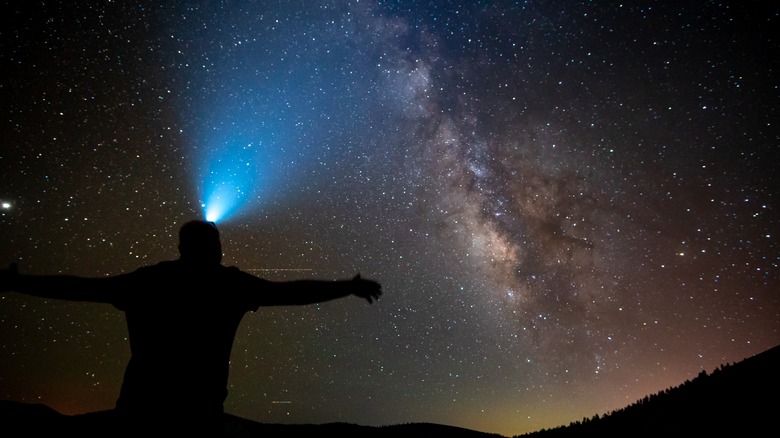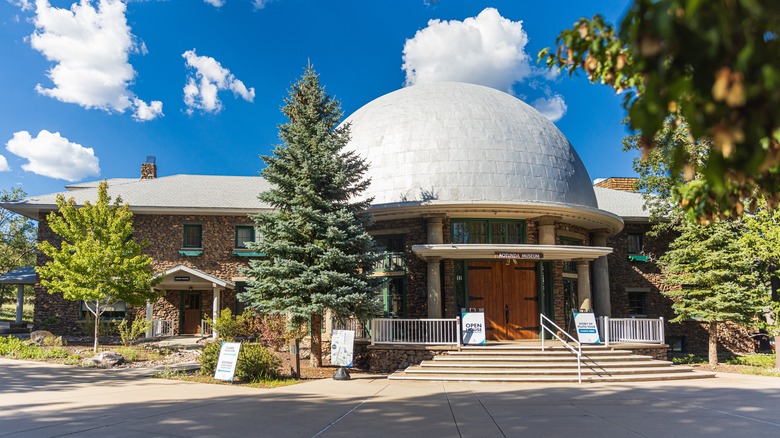Stargaze At The Charming Town Out West Designated As The World's First International Dark Sky City
If you live in a community where you can easily gaze up at the night sky and see our galaxy, the Milky Way, you might take it for granted. If you don't live somewhere like that, traveling to a place where seeing the stars is a priority might leave you with a sense of awe. There are 148 places in the United States where seeing the stars is a protected wonder, but one started it all in an unlikely place: Flagstaff, Arizona. One of the snowiest mountain towns in the United States is not only the perfect place to see the stars, but it was also the first city in the world to be designated as an International Dark Sky Community, back in 2001.
So what does it mean to be a Dark Sky Place, and how does it happen? It's not easy. A community or place must go through a rigorous nomination process and meet strict criteria, including whether it allows one to view the Milky Way with the naked eye. There are six different classifications DarkSky International recognizes: Sanctuaries, Reserves, Parks, Lodging, Communities, and Places. The certification process itself can take up to three years to complete. The Dark Sky Lodging label, the newest category, was introduced in 2023 to show which accommodations limit their light pollution and provide guests with unbeatable views of the stars. One of the first spots to claim the title is at the Grand Canyon, where you can snooze in a safari tent at a glamorous resort. Today, all designated Dark Sky sites span 22 countries on six continents, protecting more than 61,776 square miles. And one of the best places in the U.S. to view the stars is Flagstaff.
Astrotourism in and around Flagstaff
Since the charming town of Flagstaff had a head start in protecting its night skies, it has fully embraced astrotourism. The local tourism board has even declared it the "World's Best Destination for Astrotourism." For your Flagstaff vacation, you'll find plenty of ways to experience the night sky, try your hand at astrophotography, or deepen your understanding of astronomy. At Lowell Observatory, you'll discover how astronomy put Flagstaff on the map, scientifically speaking. This is where Pluto was discovered in 1930, and every February, the observatory celebrates Arizona's official state planet with the I Heart Pluto Festival. Even though the International Astronomical Union reclassified Pluto as a dwarf planet in 2006, Arizona still honors it with an official designation. Adding to the list of accomplishments in astronomy and space, every astronaut who has walked on the moon went through training in Flagstaff and northern Arizona.
Other great spots to observe the night skies and capture stunning photos include the parking lot at Wupatki National Monument, a hidden valley among Arizona's red rocks, just an hour outside of Flagstaff. If you prefer to stay in town or have limited time, check out Buffalo Park, located near downtown. This 215-acre park offers plenty of open space to view the night sky, with or without a telescope. Every September, you can attend the annual Flagstaff Star Party, a three-day (and night) event where professional night sky photographers offer free lessons on how to capture the perfect shot. Flagstaff is also one of only 37 communities in the United States with the International Dark Sky Community designation — nine of which are in Arizona. Sounds like a great list to work your way through! If you're looking for spots in Southern Arizona, Tubac is a good place to start. In addition to being recognized by the Dark Skies initiative, Tubac is home to Arizona's oldest state park.

